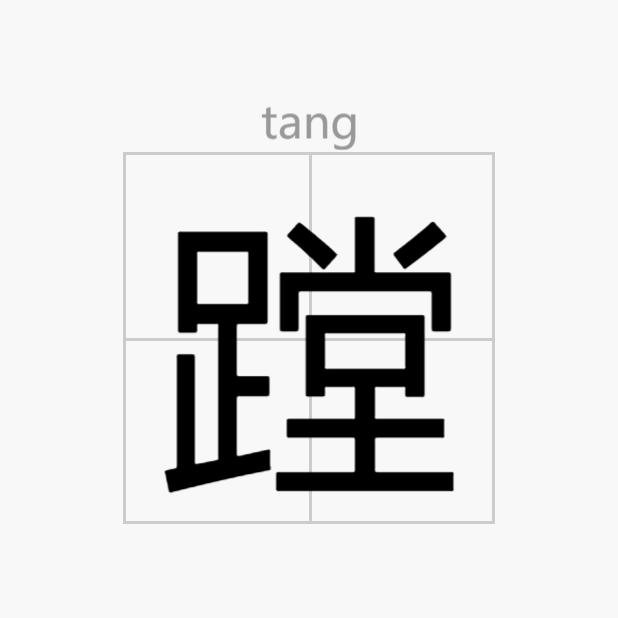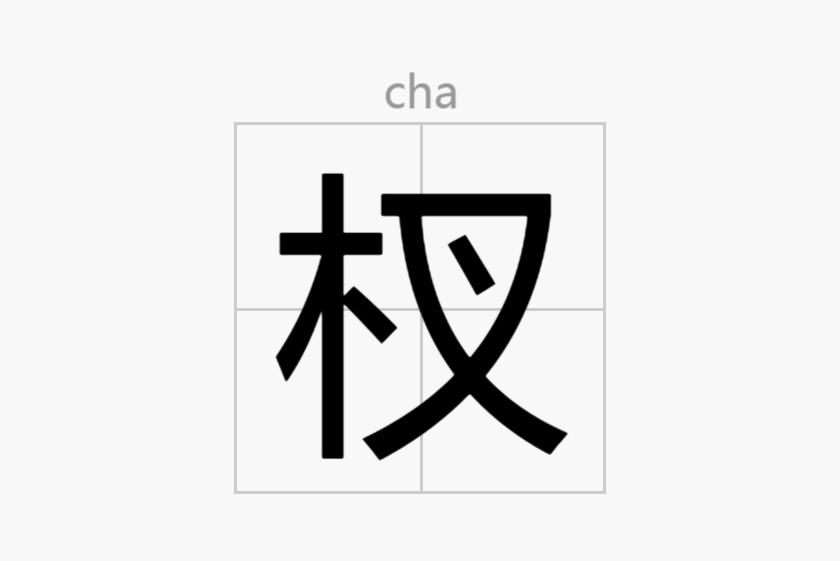AVL(二叉查找树)
温馨提示:这篇文章已超过526天没有更新,请注意相关的内容是否还可用!
AVL
二叉查找树
AVL是Athena Vortex Lattice的简称,由美国麻省理工学院的Drela博士及其学生开发,可用用于亚声速飞机气动特性和操稳特性的分析。AVL树是最先发明的自平衡二叉查找树。在AVL中任何节点的两个儿子子树的高度最大差别为一,所以它也被称为高度平衡树。
| 中文名 | 高度平衡树 |
| 语言名称 | AVL |
| 英文名 | Athena Vortex Lattice |
| 发明人 | G.M. Adelson-Velsky |
概述
在计算机科学中,AVL树是最先发明的自平衡二叉查找树。AVL树得名于它的发明者G.M.Adelson-Velsky和E.M.Landis,他们在1962年的论文《An algorithm for the organization of information》中发表了它。
节点计算

最少节点数n如以斐波那契数列可以用数学归纳法证明:
Nh=F【h+2】 - 1 (F【h+2】是 Fibonacci polynomial的第h+2个数)。
即:
N0 = 0(表示 AVL Tree 高度为0的节点总数
N1 = 1(表示 AVL Tree 高度为1的节点总数)
N2 = 2(表示 AVL Tree 高度为2的节点总数)
Nh=N【h− 1】 +N【h− 2】 + 1 (表示 AVL Tree 高度为h的节点总数)
换句话说,当节点数为 N 时,高度 h 最多为
节点的平衡因子是它的右子树的高度减去它的左子树的高度。带有平衡因子 1、0 或 -1 的节点被认为是平衡的。带有平衡因子 -2 或 2 的节点被认为是不平衡的,并需要重新平衡这个树。平衡因子可以直接存储在每个节点中,或从可能存储在节点中的子树高度计算出来。
操作
AVL树的基本操作一般涉及运做同在不平衡的二叉查找树所运做的同样的算法。但是要进行预先或随后做一次或多次所谓的"AVL旋转"。
假设由于在二叉排序树上插入结点而失去平衡的最小子树根结点的指针为a(即a是离插入点最近,且平衡因子绝对值超过1的祖先结点),则失去平衡后进行进行的规律可归纳为下列四种情况:
单向右旋平衡处理RR:由于在*a的左子树根结点的左子树上插入结点,*a的平衡因子由1增至2,致使以*a为根的子树失去平衡,则需进行一次右旋转操作;
单向左旋平衡处理LL:由于在*a的右子树根结点的右子树上插入结点,*a的平衡因子由-1变为-2,致使以*a为根的子树失去平衡,则需进行一次左旋转操作;
双向旋转(先左后右)平衡处理LR:由于在*a的左子树根结点的右子树上插入结点,*a的平衡因子由1增至2,致使以*a为根的子树失去平衡,则需进行两次旋转(先左旋后右旋)操作。
双向旋转(先右后左)平衡处理RL:由于在*a的右子树根结点的左子树上插入结点,*a的平衡因子由-1变为-2,致使以*a为根的子树失去平衡,则需进行两次旋转(先右旋后左旋)操作。
插入
向AVL树插入可以通过如同它是未平衡的二叉查找树一样把给定的值插入树中,接着自底向上向根节点折回,于在插入期间成为不平衡的所有节点上进行旋转来完成。因为折回到根节点的路途上最多有 1.5 乘 log n 个节点,而每次 AVL 旋转都耗费恒定的时间,插入处理在整体上耗费 O(log n) 时间。 在平衡的的二叉排序树Balanced BST上插入一个新的数据元素e的递归算法可描述如下: 若BBST为空树,则插入一个数据元素为e的新结点作为BBST的根结点,树的深度增1;若e的关键字和BBST的根结点的关键字相等,则不进行;若e的关键字小于BBST的根结点的关键字,而且在BBST的左子树中不存在和e有相同关键字的结点,则将e插入在BBST的左子树上,并且当插入之后的左子树深度增加(+1)时,分别就下列不同情况处理之: BBST的根结点的平衡因子为-1(右子树的深度大于左子树的深度,则将根结点的平衡因子更改为0,BBST的深度不变; BBST的根结点的平衡因子为0(左、右子树的深度相等):则将根结点的平衡因子更改为1,BBST的深度增1; BBST的根结点的平衡因子为1(左子树的深度大于右子树的深度):则若BBST的左子树根结点的平衡因子为1:则需进行单向右旋平衡处理,并且在右旋处理之后,将根结点和其右子树根结点的平衡因子更改为0,树的深度不变; 若e的关键字大于BBST的根结点的关键字,而且在BBST的右子树中不存在和e有相同关键字的结点,则将e插入在BBST的右子树上,并且当插入之后的右子树深度增加(+1)时,分别就不同情况处理之。
删除
从AVL树中删除,可以通过把要删除的节点向下旋转成一个叶子节点,接着直接移除这个叶子节点来完成。因为在旋转成叶子节点期间最多有个节点被旋转,而每次AVL旋转耗费固定的时间,所以删除处理在整体上耗费$mathrm{O}(log n)$时间。
查找
在AVL树中查找同在一般BST完全一样的进行,所以耗费 O(log n) 时间,因为AVL树总是保持平衡的。不需要特殊的准备,树的结构不会由于查询而改变。(这是与伸展树查找相对立的,它会因为查找而变更树结构。)
代码实现
public class AVLTree<T extends Comparable<? super T>> {
private AVLNode<T> root;
public AVLTree() {root = null;}
/*** Check if given item x is in the tree.*/
public boolean contains(T x) {return contains(x, root);}
/*** Internal method to check if given item x is in the subtree.*
* @param x* the given item to check.
* @param t* the node that roots the subtree.*/
private boolean contains(T x, AVLNode<T> t) {while (t != null)
{int compareResult = x.compareTo(t.element);
if (compareResult < 0)
t = t.left;
else if (compareResult > 0)
t = t.right;
else
return true;}
return false;}
/*** Insert a new item to the AVL tree.*
* @param x
* the item to insert.*/
public void insert(T x) {
root = insert(x, root);}
/*** Internal method to insert into a subtree.*
* @param x
* the item to insert.
* @param t
* the node that roots the subtree.
* @return the new root of the subtree.*/
private AVLNode<T> insert(T x, AVLNode<T> t) {
if (t == null)
return new AVLNode<T>(x);
int compareResult = x.compareTo(t.element);
if (compareResult < 0)
{t.left = insert(x, t.left);
if (height(t.left) - height(t.right) == 2)
if (x.compareTo(t.left.element) < 0)
t = rotateWithLeftChild(t);
else
t = doubleWithLeftChild(t);}
else if (compareResult > 0)
{t.right = insert(x, t.right);
if (height(t.right) - height(t.left) == 2)
if (x.compareTo(t.right.element) > 0)
t = rotateWithRightChild(t);
else
t = doubleWithRightChild(t);}
else;
t.height = Math.max(height(t.left), height(t.right)) + 1;
return t;}
/*** Return the height of root t, or -1, if null.*
* @param t
* an AVLNode.
* @return the height.*/
private int height(AVLNode<T> t) {
return t == null ? -1 : t.height}
/*** Single rotation (left-left). Update height, then return new root.*/
private AVLNode<T> rotateWithLeftChild(AVLNode<T> z) {
AVLNode<T> y = z.left;
z.left = y.right;
y.right = z;
z.height = Math.max(height(z.left), height(z.right)) + 1;
y.height = Math.max(height(y.left), z.height) + 1;
return y;}
/*** Single rotation (right-right). Update height, then return new root.*/
private AVLNode<T> rotateWithRightChild(AVLNode<T> z) {
AVLNode<T> y = z.right;
z.right = y.left;
y.left = z;
z.height = Math.max(height(z.left), height(z.right)) + 1;
y.height = Math.max(height(y.right), z.height) + 1;
return y;}
/*** Double rotation (left-right).*/
private AVLNode<T> doubleWithLeftChild(AVLNode<T> z)
{z.left = rotateWithRightChild(z.left);
return rotateWithLeftChild(z);}
/*** Double rotation (right-left).*/
private AVLNode<T> doubleWithRightChild(AVLNode<T> z) {
z.right = rotateWithLeftChild(z.right);
return rotateWithRightChild(z);}
/**Remove item x.*/
public void remove(T x)
{root = remove(x, root);}
/*** Remove item x from subtree t.
* @param x the item to be removed.
* @param t the node that roots the subtree.
* @return the new root of the subtree.*/
private AVLNode<T> remove(T x, AVLNode<T> t) {
if (t == null)
return t;
int compareResult = x.compareTo(t.element);
if (compareResult < 0) {
t.left = remove(x, t.left);
if (height(t.right) - height(t.left) == 2)
if (height(t.right.left) < height(t.right.right))
t = rotateWithRightChild(t);
else
t = doubleWithRightChild(t);}
else if (compareResult > 0)
{t.right = remove(x, t.right);
if (height(t.left) - height(t.right) == 2)
if (height(t.left.left) > height(t.left.right))
t = rotateWithLeftChild(t);
else
t = doubleWithLeftChild(t);}
else if (t.left != null && t.right != null)
{t.element = findMin(t.right).element;
t.right = remove(t.element, t.right);
if (height(t.left) - height(t.right) == 2)
if (height(t.left.left) > height(t.left.right))
t = rotateWithLeftChild(t);
else
t = doubleWithLeftChild(t);}
else
{t = (t.left != null) ? t.left : t.right;}
if (t != null)
t.height = Math.max(height(t.left), height(t.right)) + 1;
return t;}
public T findMin()
{if (isEmpty())
return null;
return findMin(root).element;}
private AVLNode<T> findMin(AVLNode<T> t) {
while (t.left != null)
t = t.left;
return t;}
public T findMax()
{if (isEmpty())
return null;
return findMax(root).element;}
private AVLNode<T> findMax(AVLNode<T> t) {
while (t.right != null)
t = t.right;
return t;}
public void makeEmpty()
{root = null;}
public boolean isEmpty()
{return root == null;}
/** Internal class AVLNode */
private static class AVLNode<T>
{T element;
AVLNode<T> left;
AVLNode<T> right;
int height;
public AVLNode(T element)
{this(element, null, null);}
public AVLNode(T element, AVLNode<T> left, AVLNode<T> right)
{this.element = element;
this.left = left;
this.right = right;
this.height = 0;}}}
AVL
单元编码
编码就是对信息进行转换,使之获得适合于记忆系统的形式的加工过程(Encoding)。经过编码所产生的具体的信息形式叫做代码(Code)。
⑴回忆错误实验表明:人们在回忆时产生错误主要发生在声音相近的字母混淆上。说明短时记忆的信息代码主要是声音代码或听觉代码。
⑵即使使用视觉材料作为刺激,其代码也仍有听觉性质,在短时记忆中出现形声转换,而以声音形式贮存。
⑶鉴于字母、字词的听觉代码和口语代码都是不同形式的言语代码,因此,常将听觉的(Auditory)、口语的(Verbal)、言语的(Languistic)代码联合起来,称之为A.V.L单元。
参考资料
1.程序员专用复习资料:平衡二叉树介绍·希赛网
2.数据结构之AVL树·程序员大本营






